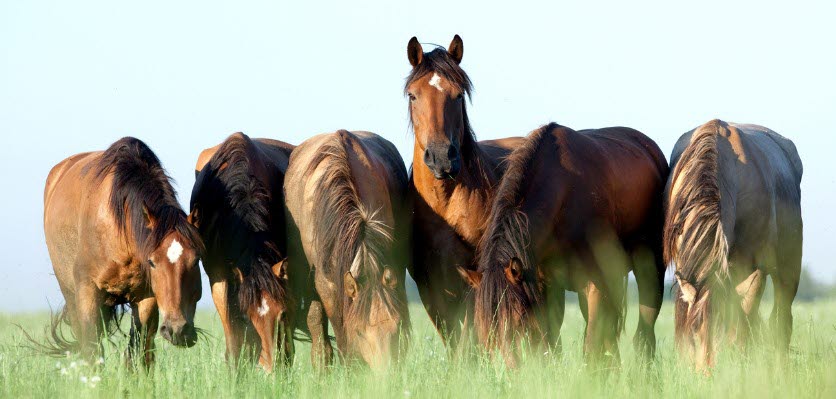Equine influenza

What is equine influenza?
Equine influenza is the disease caused by strains of Influenza A that are endemic in horse species. Equine influenza occurs globally and is caused by two main strains of the virus: equine-1 (H7N7) and equine-2 (H3N8). The disease has a nearly 100 percent infection rate in an unvaccinated horse population that has not been previously exposed to the virus.
Equine influenza in Australia
Australia felt the effects of equine influenza in 2007-2008.
Equine influenza is an acute, highly contagious, viral disease that can cause rapidly spreading outbreaks of respiratory disease in horses and other equine species. Equine influenza is exotic to Australia and would have a major impact on the Australian horse industry if it were to become established here. As a result, a massive effort was mobilised to eradicate the virus during the outbreak in 2007-2008, and this was successfully achieved in a very short period of time.
Humans do not get infected with equine influenza. However, humans can physically carry the virus on their skin, hair, clothing, and shoes, and can, therefore, transfer the virus to other horses.
What are the clinical signs?
The main clinical signs of equine influenza are usually a sudden increase in temperature (38.5°C or higher); a deep, dry, hacking cough; and a watery nasal discharge, which may later become mucopurulent. Other signs can include depression, loss of appetite, laboured breathing, and muscle pain and stiffness.
Voluntary vaccination vs Horse levy
The Federal Minister for Agriculture, Tony Burke, has publicly supported voluntary vaccination as the Commonwealth's preferred position for equine influenza control following failure to have an emergency animal disease response agreement for the horse industry passed in the Parliament in 2009.
Mr. Burke said a levy to help cover the control and eradication of any future equine influenza outbreaks was rejected in the Senate last year, despite broad industry support for the model put forward.
While Mr. Burke says his number one preference had always been for a levy ahead of any vaccination, a failure to agree to a levy or "doing nothing" would leave Australia's horse sector to exposed to further financial losses.
At the Primary Industries Ministerial Council Meeting in Darwin on Friday (23 April 2010), ministers agreed to the need to establish a horse industry commitment to a national levy by 1 December 2010.
This would also mean the inclusion of the sector in the national Emergency Animal Disease Response Agreement.
The AVA position
The AVA says there can be no justification for the introduction of voluntary vaccination on scientific, economic or practical grounds to allow voluntary vaccination of horses in Australia.
All inquiries into vaccination against equine influenza have indicated that it is an expensive option, which would have a negative impact on the way that the Australian horse industry operates.
The AVA argues that the government’s approach won’t prevent an outbreak and it won’t save jobs. If there is an outbreak, vaccination will only delay detection. Vaccinated horses will still need to be subject to movement standstill because they can still spread the disease.
In order to ensure long-term security for the industry, the AVA says there needs to be a proper emergency disease funding arrangement for the horse industry. This is important because the threat to the industry is bigger than equine influenza – a funding agreement will deal with any horse diseases that might affect the industry.
